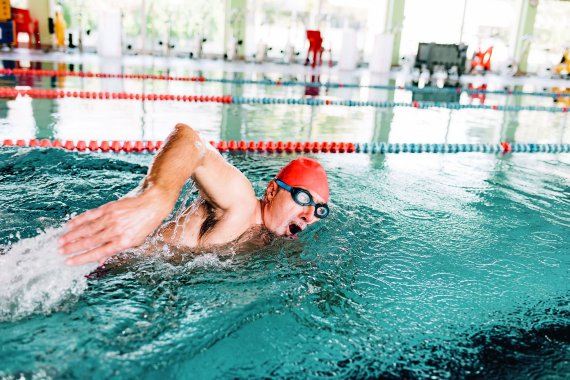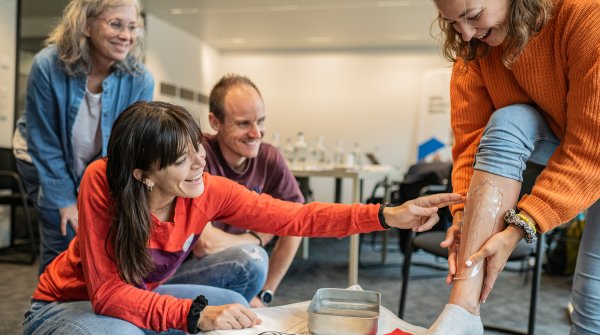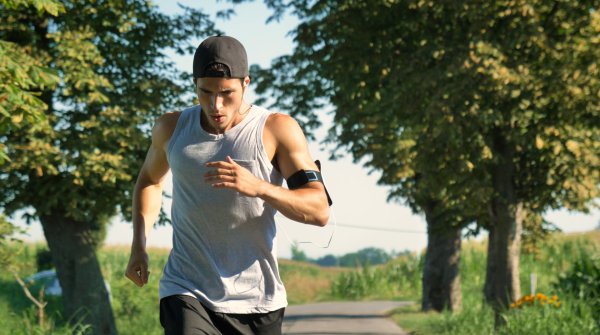
Every runner knows the problem: A competition is on, but the training is stagnating. The running shoes are already at the doorstep, but the lack of motivation or the appointment calendar always puts a spoke in the wheel. In order to do justice to the ambitious training plan, the intensity is increased and the body is pushed from zero to one hundred during the first jogging - a mistake that is immediately punished.
Already with the first run, already after some meters, the lower leg hurts along the shinbone edge. This pain persists during the run, but usually disappears after the session. True to the motto "out of sight, out of mind" runners do not visit the doctor, instead the same mistake is made again during the next training session. At the latest then the pain comes back, also in the resting state it becomes increasingly noticeable with targeted pressure.
The more frequently the problem occurs, the more likely it is that you will visit an expert. The doctor will quickly name the symptoms as shin splints. "Once the diagnosis has been made, the work just begins," warns Sven Knipphals, former athlete and now chiropractor.
Studies show that every twelfth runner suffers from shin splints. Even if the diagnosis can usually be made quickly in view of the symptoms alone, a possible fracture should also be ruled out by means of an X-ray or MRT.

In addition to stress reactions, biomechanics and shock absorption play a decisive role. shin splints are primarily an irritation of the periosteum due to an overload of the posterior tibial muscle, the tibial muscle, which mainly helps the foot to avoid overpronation when walking, i.e. excessive tilting of the foot in the course of the rolling movement.
"Therapeutically, one must therefore mostly treat sacroiliac joints, hips and upper and lower ankle joints and guide the athletes to better foot, knee, hip and pelvic stabilization," adds the German runner-up over 200 meters in 2013.
According to Knipphals, reactions that do not occur due to malpositions or blockages, but only due to unusual stimuli and surfaces or new shoes should be cured within 14 days with moderate stress.
However, incorrect training alone is not the cause of shin splints. "The problems are often caused by wrong running shoes", explains physiotherapist Thomas Marx. This often applies to beginners who choose their footwear according to their own taste, but not according to effectiveness. Especially a blasting too high could be dangerous for the running novice. For these reasons, the syndrome is also described as a childhood disease in running circles.
But as already mentioned, this is much more than just a beginner's problem. Even an experienced runner with good technique and the right footwear can be afflicted by shin pain, for example if the load is too high. The former Sprinter Knipphals, who finished his active professional career in the summer of 2018, was himself afflicted by the syndrome when he started athletics. He had mainly noticed it on the hall floor in winter, and not outdoors in summer. "Whether this was explicitly due to the difference between the track surface in the hall and the one in the stadium or because you often run on grass in summer, you can't say one hundred percent," explains Knipphals.
In most cases, those affected can help themselves. Regardless of the cause, as an immediate measure, walking should be stopped immediately until the pain has completely subsided. Swimming, aqua jogging or cycling can be used as substitute sports during the running break in consultation with the doctor.
According to Marx, in addition to the prescribed compulsory break, an orthopaedic surgeon will first begin with sound wave therapy. "As a physiotherapist I apply fascial technique and acupressure directly at the spot with my thumb", the hobby runner describes one aspect of the therapy. Since the possible causes are ambivalent, this also applies to the therapeutic approaches.

In order not to get into the vicious circle of shin splints after a break from running, the causes should be thoroughly analysed and rectified, otherwise pain will occur again. Insoles can solve the problem for people with malpositioned legs and feet.
In general, an analysis of the running technique is suitable for beginners or runners with more frequent problems on the shins. The purchase of more pairs of shoes for more variety and a variation of the running surface can also be helpful. In any case, an individual analysis should be made.
According to Marx, the most important thing, however, remains the observance of rest breaks: "The first and also most important measure is a running break. But the strict running ban is sometimes difficult to communicate. "When shin splints are treated, there is a rapid improvement and patients become euphoric," he reports.
After that, when pain recurs, the disappointment is great, and the goal of being able to walk again is far away. It is better to increase the intensity slowly, but to get more out of running. Then the next marathon will work out.
- ISPO awards
- Mountain sports
- Bike
- Design
- Retail
- Fitness
- Health
- ISPO Job Market
- ISPO Munich
- ISPO Shanghai
- Running
- Brands
- Sustainability
- Olympia
- OutDoor
- Promotion
- Sports Business
- ISPO Textrends
- Triathlon
- Water sports
- Winter sports
- eSports
- SportsTech
- OutDoor by ISPO
- Heroes
- Transformation
- Sport Fashion
- Urban Culture
- Challenges of a CEO
- Trade fairs
- Sports
- Find the Balance
- Product reviews
- Newsletter Exclusive Area
- Magazine








